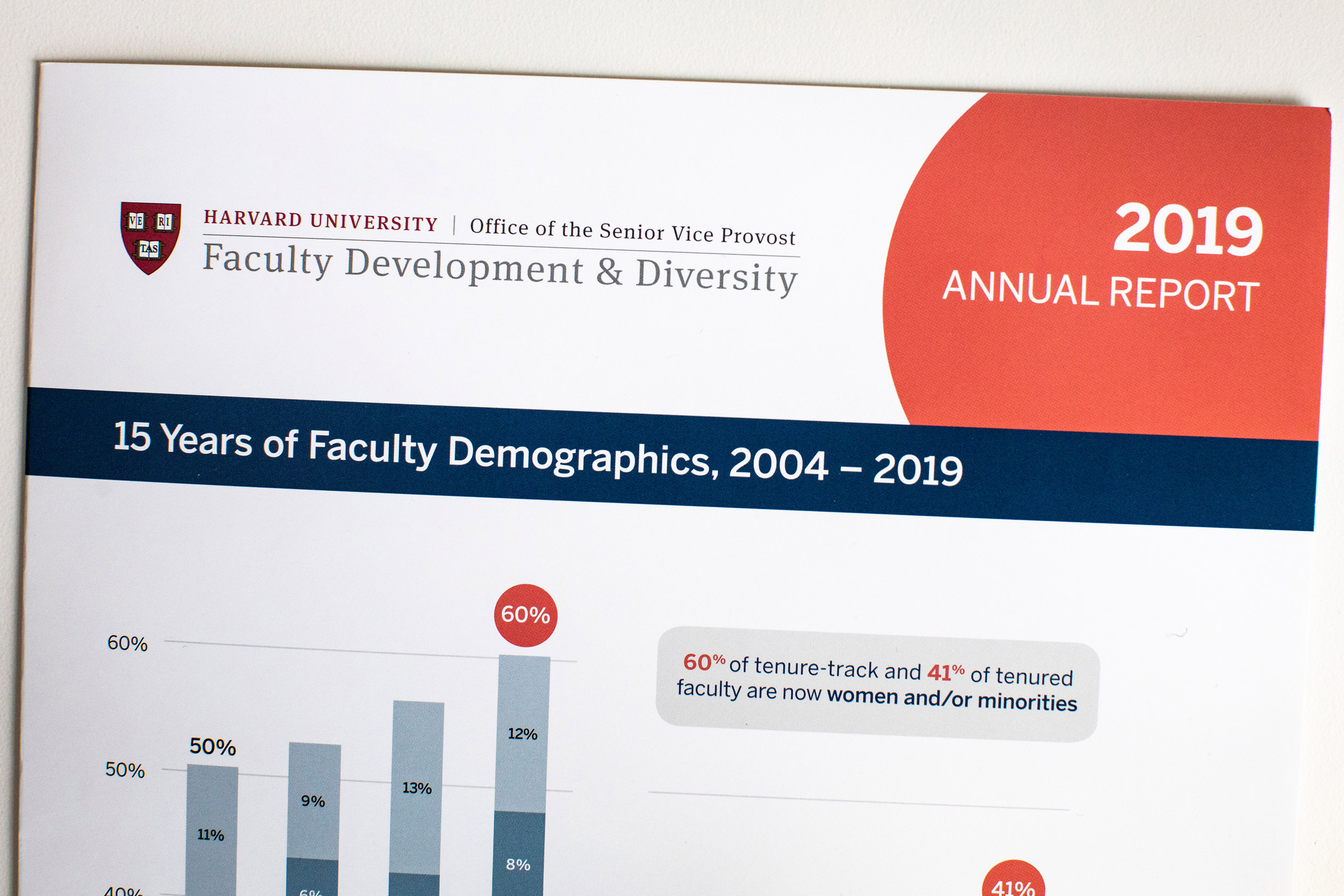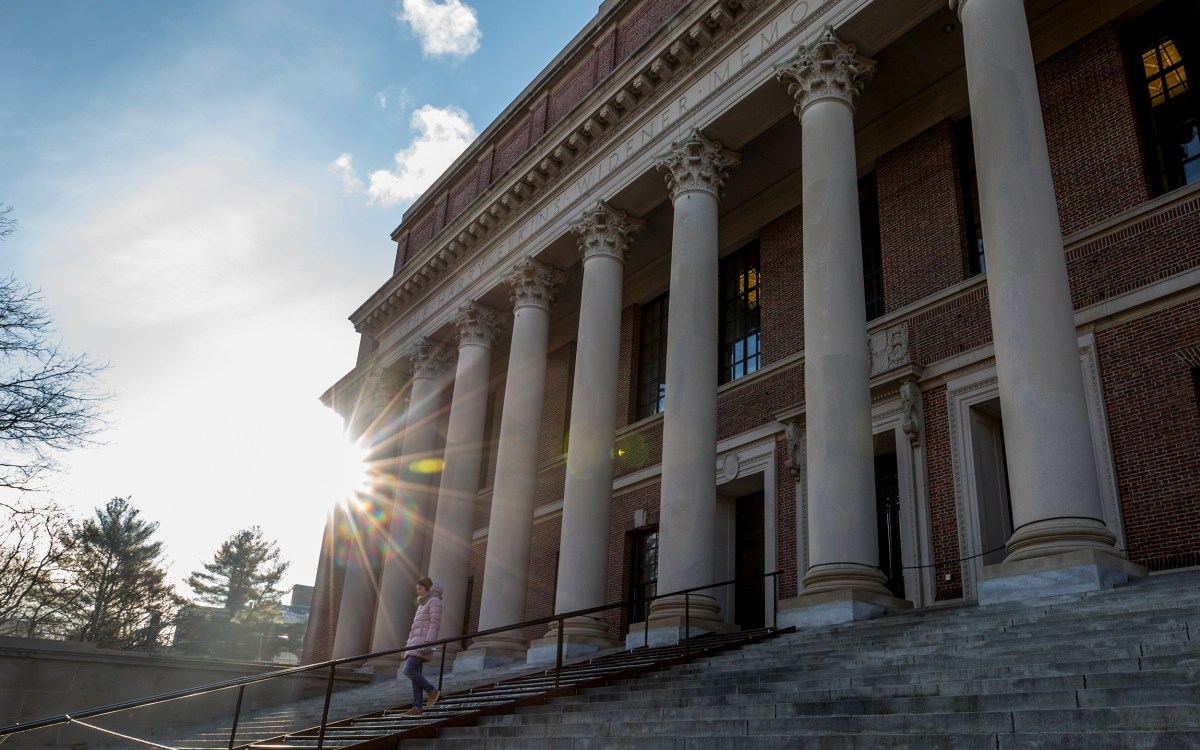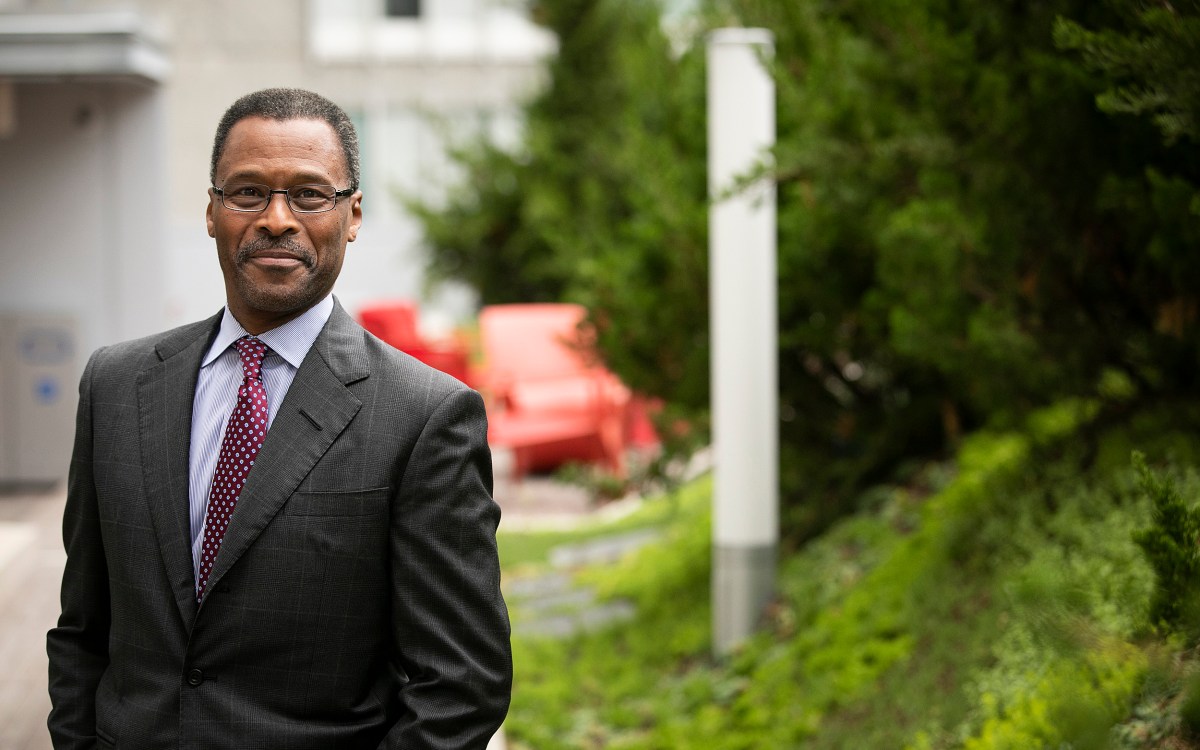
Faculty diversity continues to grow
Percentages of women and minorities who are tenured and tenure-track reach record highs
Harvard continues to make progress on its goal to diversify its faculty, with the percentages of women and minorities who are tenured and tenure-track professors at all-time highs, according to the annual report of the Office of Faculty Development and Diversity. Sixty percent of tenure-track and 41 percent of tenured faculty are now women and/or minorities.
This year’s report places into context Harvard’s commitment to diversity since 2004, the year before the Task Force on Women Faculty and the Task Force on Women in Science and Engineering jointly recommended that a senior position in the University’s central administration be created to address and support faculty development and faculty diversity at Harvard. Progress has been steady since.
“Increasing the diversity of the faculty continues to be a major priority for Harvard’s leadership,” said Judith Singer, James Bryant Conant Professor of Education and senior vice provost for Faculty Development and Diversity. “The reality is, diversifying the faculty is slow, steady work, one search or one review at a time. But I am pleased with our truly measurable, positive progress over the past 15 years, which is a testament to the University’s commitment to providing the necessary resources to recruit and retain an increasingly diverse faculty. In short, this is not your father’s Harvard.”
Changes are incremental because turnover in the senior faculty at Harvard is low. In any given year, approximately 95 percent of Harvard faculty members remain. On average, the University hires only about 70 new ladder faculty (tenured and tenure-track) each year, against a base of nearly 1,500.
Still, the data tell a significant story about a more diverse Harvard. The percentage of tenured faculty who are women and/or minorities is up 49 percent from 2004, and tenure-track appointments are up 14 percent for women, 32 percent for Asian and Asian American faculty, and 54 percent for other underrepresented minorities. These statistics are particularly striking since the overall number of tenure-track faculty has decreased by 18 percent over the same 15-year period.
“The commitment from the Schools, and their deans and faculty members, has been central to our success,” said Singer. “The Schools hire faculty, and they share our goal of creating a more diverse Harvard.” To that end, the University and its Schools have held sessions on how to mitigate implicit bias in the search process and how to recruit faculty from a wider variety of backgrounds and institutions.
This year’s annual report shows that diversity has increased both in fields where women and minorities have historically been better represented, such as education and the arts and humanities, and in those where they have not. For the sciences in the Faculty of Arts and Sciences, for example, the percentage of tenure-track faculty who are women and/or minorities has increased from 47 to 58 percent since 2004. In the John A. Paulson School of Engineering and Applied Sciences, 52 percent of tenure-track faculty are now women and/or minorities, up from 35 percent 15 years ago.
The Office of Faculty Development and Diversity is Harvard’s central faculty affairs office, and it is devoted to the development, implementation, and evaluation of University-wide programs designed to improve faculty life and diversity.
Among these programs is the continued investment in child care for faculty. For the past two years, every eligible faculty member who applied for child care was able to receive it. A seventh child care center in Allston, which will have space for 80 children, will open in the next couple of years, further expanding Harvard’s ability to care for the families of its faculty. The University also offers a child-care scholarship program. All told, Harvard has invested nearly $50 million in child care in the past 15 years.
“Part of the strategy of moving to a tenure track, which Harvard did in the early 2000s, is to encourage faculty to put down roots and feel committed to the institution,” said Singer. “Of course, once our faculty arrive here on campus, we want them to stay, and developing programs like these goes a long way toward both recruiting outstanding and diverse candidates, and keeping them here.”






